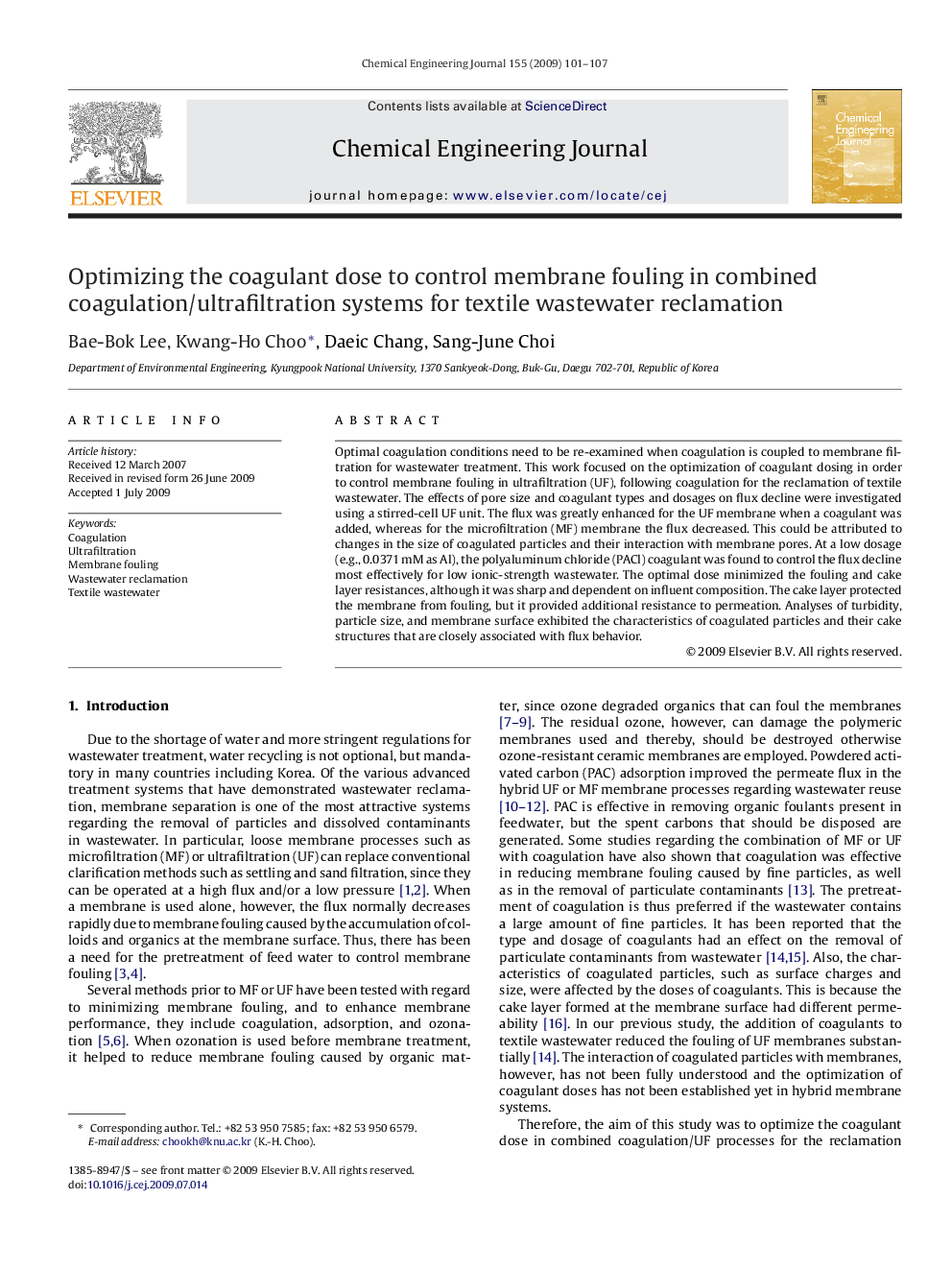| Article ID | Journal | Published Year | Pages | File Type |
|---|---|---|---|---|
| 153312 | Chemical Engineering Journal | 2009 | 7 Pages |
Optimal coagulation conditions need to be re-examined when coagulation is coupled to membrane filtration for wastewater treatment. This work focused on the optimization of coagulant dosing in order to control membrane fouling in ultrafiltration (UF), following coagulation for the reclamation of textile wastewater. The effects of pore size and coagulant types and dosages on flux decline were investigated using a stirred-cell UF unit. The flux was greatly enhanced for the UF membrane when a coagulant was added, whereas for the microfiltration (MF) membrane the flux decreased. This could be attributed to changes in the size of coagulated particles and their interaction with membrane pores. At a low dosage (e.g., 0.0371 mM as Al), the polyaluminum chloride (PACl) coagulant was found to control the flux decline most effectively for low ionic-strength wastewater. The optimal dose minimized the fouling and cake layer resistances, although it was sharp and dependent on influent composition. The cake layer protected the membrane from fouling, but it provided additional resistance to permeation. Analyses of turbidity, particle size, and membrane surface exhibited the characteristics of coagulated particles and their cake structures that are closely associated with flux behavior.
